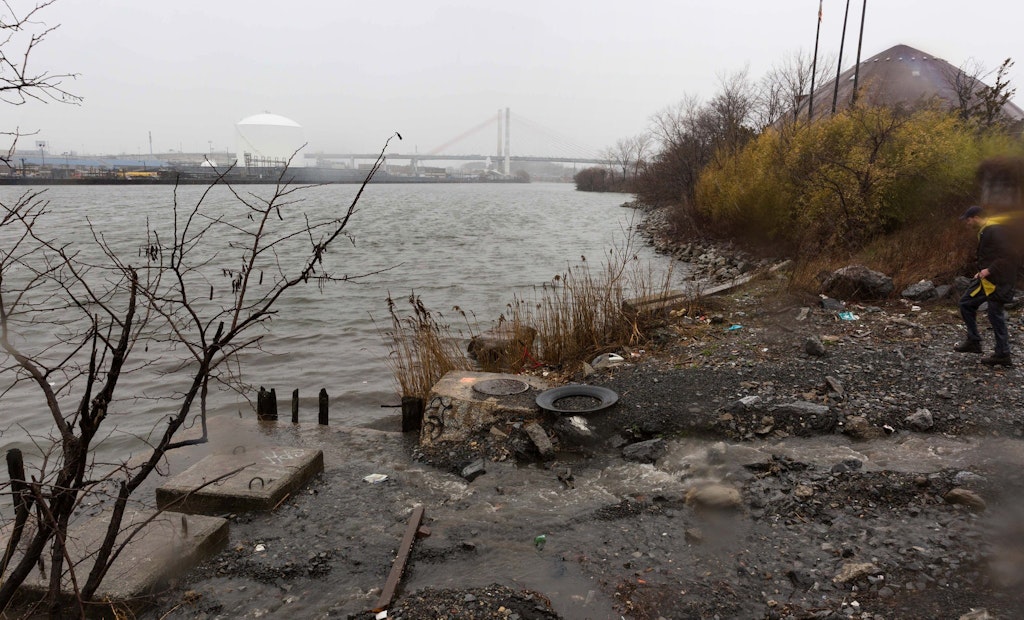
Willis Elkins, program manager for the Newtown Creek Alliance, at a CSO outfall on Newtown Creek. (Photo by the New York Times)
Interested in Stormwater?
Get Stormwater articles, news and videos right in your inbox! Sign up now.
Stormwater + Get AlertsA new public outreach campaign is being rolled out in New York City aimed at reducing combined sewer overflows. As is typically the case, turning educational outreach into actual results could prove to be challenging, though the message is simple: Wait.
Areas of Brooklyn and Queens are specifically being targeted and residents are being asked to cut back their water use during rainstorms — postponing showers, laundry, even waiting to flush toilets.
“We take it for granted, you flush your toilet and it goes away,” said Willis Elkins in an article in the New York Times. “Unfortunately, we have such a vast and old sewer system in the city, it can’t always handle excessive rain.”
Elkins is program manager for the Newtown Creek Alliance, a nonprofit group that helped develop the idea for the campaign.
According to the New York City Department of Environmental Protection (DEP), about 60 percent of the city’s sewer system is still combined.
“We’re grappling with this very difficult legacy problem,” Angela Licata, deputy commissioner of DEP, told the New York Times.
Progress has been made over the years. Wastewater treatment plants have been built and upgraded. Green infrastructure projects have been installed to reduce stormwater runoff. About 20 billion gallons of CSOs are discharged annually today compared to 110 billion gallons 30 years ago, according to DEP.
But although the situation is better, there is still room for improvement, so now officials are trying the new “Wait …” campaign has yet another method to employ in the ongoing battle to reduce overflows.
To sign up volunteers, the DEP will be running Facebook ads, partnering with local environmental groups, and mailing out fliers to about 30,000 homes in two dozen neighborhoods located in drainage areas for Newtown Creek, Bowery Bay, and Flushing Bay and Flushing Creek. Single-family homes are being targeted because their water use data will be easier to track, but according to the New York Times article, officials’ hope is to eventually expand it to apartment buildings as well. Real-time rainfall data at the Newtown Creek and Bowery Bay treatment plants will be monitored to determine when CSOs are likely. Once gauges register a half-inch of rainfall, volunteers will be sent a text message asking them to postpone their water use. When the storm ends and treatment plant operations are back to normal, volunteers will be sent a second text message thanking them for their help.
One angle being used to recruit volunteers likens the problem to something big-city residents are familiar with: “It’s like rush hour on the freeway: There’s only so much road and if everyone uses it at the same time, it can get jammed. And just like rush hour, the best thing to do is avoid it.”
The new campaign came out of a couple earlier efforts. In 2014, the Newtown Creek Alliance enlisted some residents to cut back water use during rainstorms. In 2016, that was expanded into a six-month pilot project in neighborhoods around Newtown Creek that included 379 volunteers. During that time, volunteers were asked to “wait” on their water use 13 times for an average of seven hours. By the end of the pilot project, there was a 5 percent drop in the average daily water consumption of the volunteers.
Source: The New York Times





